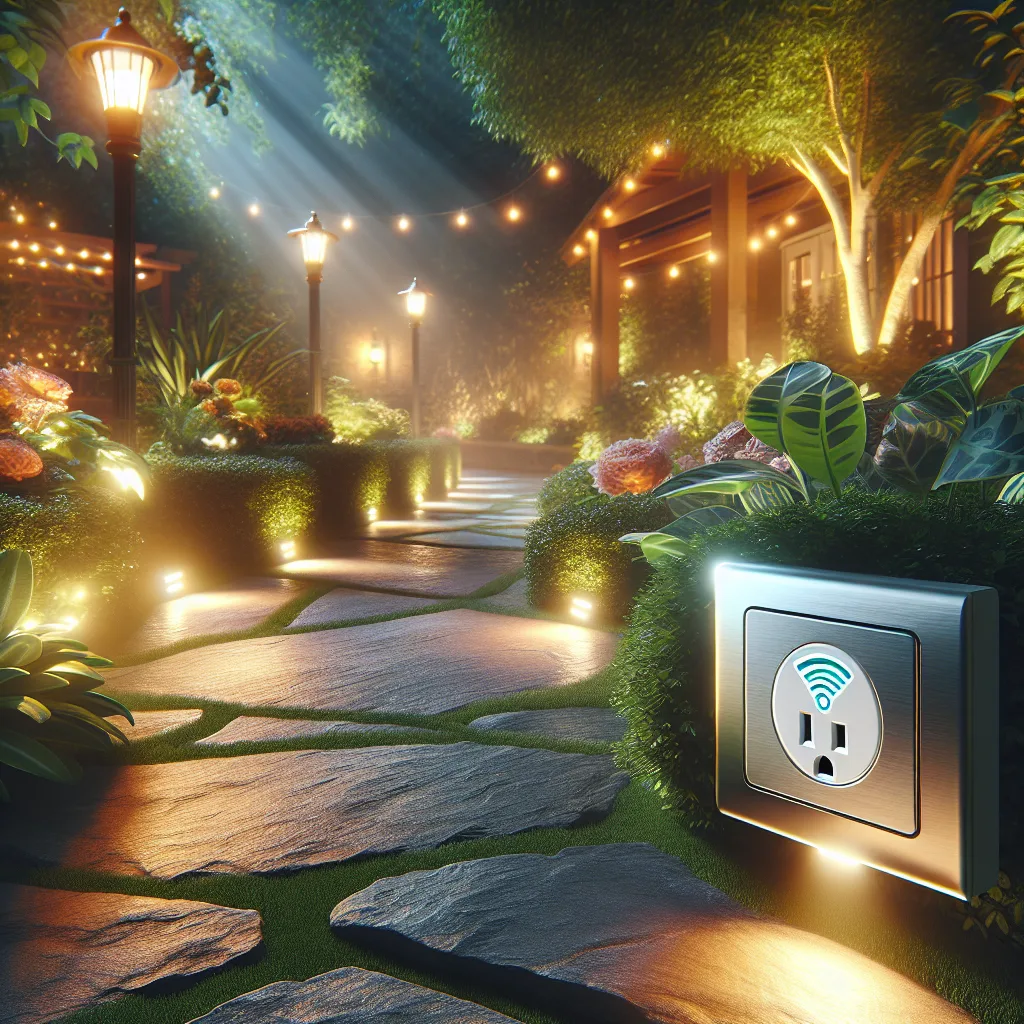Trying to control your landscape lights with a smart plug and it’s not working? Here’s a simple explanation for why and the easy fix you’ve been looking for.
It seems like it should be one of the simplest smart home projects ever.
You have beautiful low-voltage landscape lights. You have a Wi-Fi smart plug. The lights are powered by a transformer that plugs right into a standard wall outlet.
So, you should be able to just plug that transformer into the smart plug, and—voila—smart landscape lighting, right?
But when you try it, nothing happens. The plug clicks on, but the lights stay dark. Or maybe they flicker for a second and then die. It can be a real head-scratcher, and I’ve been there myself. You start to wonder if the plug is broken or if your transformer is suddenly busted.
Don’t worry. You’re not going crazy, and your gear is probably fine. You’ve just run into a classic case of new technology meeting old technology, and them not quite shaking hands properly.
The Real Reason It’s Not Working
The issue isn’t about whether the plug can handle the voltage. The problem is the transformer itself.
Most standard indoor smart plugs are designed for simple electronics—things like lamps, fans, or coffee makers. These are called “resistive loads.” They draw a steady, predictable amount of power.
Your low-voltage lighting transformer is different. It’s what’s known as a “magnetic” or “inductive load.” When you first turn it on, it demands a huge, momentary surge of power to get going. This is called an “inrush current.”
Think of it like starting a lawnmower. You don’t just flip a switch; you have to give it a strong, sharp pull to get the engine to roar to life. Your transformer does the same thing with electricity, demanding a big gulp of power for a fraction of a second.
A standard, dinky smart plug sees that massive, sudden power draw and its internal safety circuits kick in. It thinks there’s a short circuit or a dangerous power surge, so it shuts itself off to be safe. That’s why you might hear a click but get no power. The plug is basically protecting itself from the transformer’s “power gulp.”
The Fix is Simpler Than You Think
So, how do you get around this? You have two great options, and both are pretty straightforward.
1. Use a Heavy-Duty or Outdoor Smart Plug
The easiest and cheapest solution is to get a smart plug that’s built for the job. Instead of a simple indoor plug, look for one that is specifically rated for outdoor use or for heavy-duty appliances.
These plugs are designed to handle the exact kind of power surge that transformers and motors produce. They are built with beefier components that don’t get spooked by that initial inrush current.
What to look for:
* Outdoor Rating: Plugs designed for the outdoors are almost always more robust.
* Appliance/Motor Rating: Look for plugs that mention they are for pumps, motors, or heavy appliances.
* Higher Amperage: Most are rated for 15 amps, which is a good sign.
Just swap your little indoor plug for one of these, and your problem will likely be solved.
2. Get a Dedicated Smart Transformer
If you’re looking for a more seamless solution or if your current transformer is old anyway, you could upgrade to a smart low-voltage transformer.
These are units where the smart technology is built right in. You don’t need a separate plug at all. You connect it to your home’s Wi-Fi, and you can control it directly from an app on your phone. They often come with extra features, like built-in timers, dimming capabilities, and the ability to manage different lighting zones.
This is a more expensive option, of course, but it’s a cleaner, all-in-one setup that’s designed from the ground up to work perfectly.
So, What’s the Bottom Line?
It’s a simple mismatch. Your smart plug is a lightweight, and your transformer is a heavyweight. You just need to match them up correctly.
For most people, grabbing a heavy-duty outdoor smart plug is the perfect fix. It’s cost-effective and takes about five seconds to install. If you’re ready for an upgrade anyway, a smart transformer is a fantastic, integrated solution.
Either way, you can definitely get the smart control you want for your landscape lights. You just needed to know the secret handshake.
